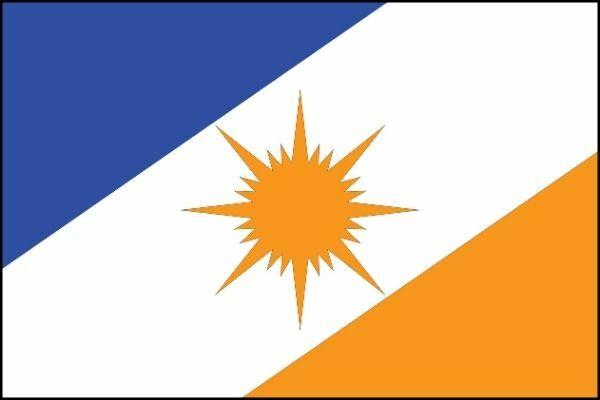O Tocantins is a Brazilian state that makes up the North region from the country. It was established in 1988 and made official the following year, and is therefore considered the youngest federation unit in the national territory. Its current population is 1.59 million inhabitants, with the capital, Palmas, the most populous municipality. It integrates the Cerrado biome and has a predominantly tropical climate. In the economy, cattle raising and soybean cultivation stand out.
Read too: What are the states in Brazil?
Tocantins general data
- Region: North.
- capital: Palms.
- Government: representative democratic, with the governor at the head of the state executive branch.
- Areaterritorial: 277,423,630 km² (IBGE, 2020).
- Population: 1,590,248 inhabitants (IBGE, 2020).
- Densitydemographic: 4.98 inhab/km² (IBGE, 2010).
- spindle: Brasília Standard Time (GMT -3 hours).
- Climate: predominantly tropical.
Tocantins Geography
Tocantins is a Brazilian state that integrates the North Region. Its formation took place in 1988, making it, therefore, the newest unit of federation in the national territory. The seat of the government of Tocantins is in the municipality of Palmas, in the central region of the state.
Borders six other Brazilian states, being them:
- Maranhão, northeast and east;
- Piauí, in a narrow strip to the east;
- Bahia, to the southeast;
- Goiás, South;
- Mato Grosso, southwest;
- For, west and northwest.
Tocantins climate
The predominant climate type in Tocantins is tropical. In the region known as Bico do Papagaio, in the far north of the state, there is a humid equatorial climate.
In general, the first type has a very prominent dry season, which lasts from May or June to October, when the rainy season begins. This lasts until the month of April. At annual rainfall averages vary between 1,200 and 1,800 mm, while temperatures are high even in the Winter, staying above 18º C.
In the north of the state, under the equatorial climate, rainfall volumes are greater, possibly exceeding 2,000 mm.
Tocantins relief
Tocantins is inserted in the Central Plateau, which gives the state features that are characteristic of this morphological domain. The Tocantins relief is, however, quite dissected by the action of weathering agents, and the surfaces have altimetric dimensions that mostly vary between 20 and 500 meters.
The state is also composed of depressions and plains rivers. The plains of Rio Tocantins and Rio Araguaia stand out, being this the most comprehensive in area, located in southwest Tocantins. The highest point in the state is Serra das Traíras, close to the border with Goiás, with 1,340 meters of altitude.
Tocantins Vegetation
The characteristic plant species of the thick spread throughout almost all of Tocantins. As with the climate, only a small portion of the northern part of the territory is included in the Amazon biome, where a transition band between the two domains extends. Near the eastern border with Pará and north with Maranhão, it is possible to observe the presence of forests.
Tocantins Hydrography

Tocantins is located in the catchment area of the Tocantins-Araguaia hydrographic basin, considered the largest basin located entirely in the Brazilian territory. The state is further divided into six other sub-basins.
The two main rivers are the Araguaia, which runs along the western border, and the Tocantins, which crosses the state longitudinally from the south. The Rio do Sono is the largest river exclusively from Tocantins.. Also noteworthy are the Maranhão (a tributary of the Tocantins) and Paranã rivers.
See too: São Francisco River – very important watercourse for the Northeast Region of Brazil
Tocantins Map

Tocantins Demographics
The state of Tocantins currently has a population of 1,590,248 inhabitants, according to IBGE statistics for 2020. It is the 4th least populous state in Brazil, home to 0.7% of the national population. On a regional scale, Tocantins is the 4th in population, with 8.5% of the inhabitants in the North of the country.
At the time of the last census (2010), it had ademographic density considered low, of 4.98 inhab/km². With recent data, this value rose to 5.73 inhab/km², remaining below the national average, but higher than in the North Region.
Most of the population of Tocantins is concentrated in urban areas. According to the 2010 Census data, the state's urbanization rate is 78.79%. The most populous municipality is its capital, Palmas, with 306,296 inhabitants. At the other extreme, the city with the smallest population is Oliveira de Fátima, with 1,118 inhabitants.
Tocantins geographic division
As of 2017, IBGE started to divide Brazilian states into intermediate geographic regions and immediate geographic regions. Tocantins has three intermediate regions.
- Regionof palms: is located in the north of the state and comprises the immediate regions of Palmas, Porto Nacional, Paraíso do Tocantins and Miracema do Tocantins.
- Araguaina Region: consists of the central portion of the state and is divided into the immediate regions of Araguaína, Guaraí, Colinas do Tocantins, Tocantinópolis and Araguatins.
- Gurupi Region: covers the south of the state and comprises the regions of Gurupi and Dianópolis.
Economy of Tocantins
O Gross Domestic Product (GDP) of Tocantins is R$35.66 billion (IBGE, 2018), equivalent to 0.5% of the Brazilian GDP. The largest portion of this amount corresponds to the service sector, which contributes to approximately 75% of the economy of Tocantins. Right after that are the agriculture (13.1%) and industry (12.3%). Tocantins currently represents 9% of the economy in the North Region.
O secondary sector it is aimed at the construction industry, public utility services and the food industry, with a small share of the mineral and chemical industries.
Livestock is one of the main economic activities in the state, ranking second in terms of products for export with the sale of beef. In agriculture, soybeans, the main crop and export product from Tocantins, stand out, as well as corn and cotton. the state was one of the areas where the agricultural frontier advanced in the 1970s, when there was greater insertion of the agribusiness production model.

Tocantins Government
The government of Tocantins is of the representative democratic type, with elections held every four years. The head of the executive branch of the state is its governor, who also has a vice governor. In the Legislative, representation takes place from 3 senators, 8 federal deputies and 24 state deputies.
Read too: 1988 Constitution - document that ensured the creation of the state of Tocantins
Tocantins Flag

Infrastructure of Tocantins
Some major federal highways cross Tocantins, such as the BR-153, which runs from Rio Grande do Sul to Pará and is widely used for transporting products, and the BR-230, known as the Transamazônica and which crosses Brazil latitudinally in the regions North and North East.
One North-South Railroad section travels through the state between the municipalities of Porto Nacional and Açailândia, in Maranhão. In addition to the interconnection between the states of the regions Southeast, Midwest and North of the country, this modal has strategic importance for the transport of goods, especially grains, as well as the Tocantins-Araguaia Waterway.
The main source of energy generation in the state is water, highlighting the great energy potential of the Tocantins River. Others renewable sources have been gaining space in the Tocantins energy matrix, as is the case of solar.
Tocantins Culture
The culture of Tocantins is formed from characteristic elements of the different ethnic groups that make up the population of the state, mainly from the traditional peoples, such as indigenous peoples and quilombola communities. Many of its cultural manifestations are considered intangible heritage of the state.
O craftsmanship consists of a Tocantinian tradition and an important source of income for many manual workers, the most popular being the one carried out through the Golden grass, in the Jalapão region. In addition to this material, babassu and buriti straw, ceramics and crystals are also used.
Some of the popular festivities in the state are:
- Folia de Reis;
- Feast of the Divine;
- Feast of Our Lady of the Nativity;
- Cavalcades;
- Congo; and
- Feast of Our Lady of the Rosary.
In gastronomy, dishes such as paçoca de carne de sol, chambari, sweet buriti and other preparations with typical fruits of the Cerrado stand out.

History of Tocantins
The first foreign expeditions arrived in Tocantins lands at the beginning of the 17th century, with the entry of the French from the Tocantins River. A few years later, it was the turn of the Portuguese to found the first missionary villages in the area.
Tocantins corresponded to the northern portion of Goiás, region that stood out in the 18th century for its gold production. The discovery of the first deposits is attributed to the pioneer Bartolomeu Bueno da Silva, in 1723. This period is marked by an intense migratory flow to the different regions where the gold was being gradually found, materializing through the numerous villages (camps) established during the years in which the mining it was dominant in the economy. African slave labor was employed and, to a lesser extent, indigenous.
The decline of gold production began in the late eighteenth and early nineteenth centuries, and reached sectors that were directly dependent on mining activity. With the crisis, agricultural activity and, mainly, cattle raising gained importance..
The division of the captaincy of Goiás between the Northern and Southern Districts began the process of separating the territories. The struggle for the emancipation of Tocantins effectively began in 1821, with attempts being put into practice in 1863 and 1889, still in the Brazil Empire. The movement intensified in the 20th century, mainly through the work of the Study Commission of Problems of the North (Conorte), which prepared a popular menu and collected signatures in favor of the new state. As a result, Tocantins was officially created in 1988.
By Paloma Guitarrara
Geography teacher

